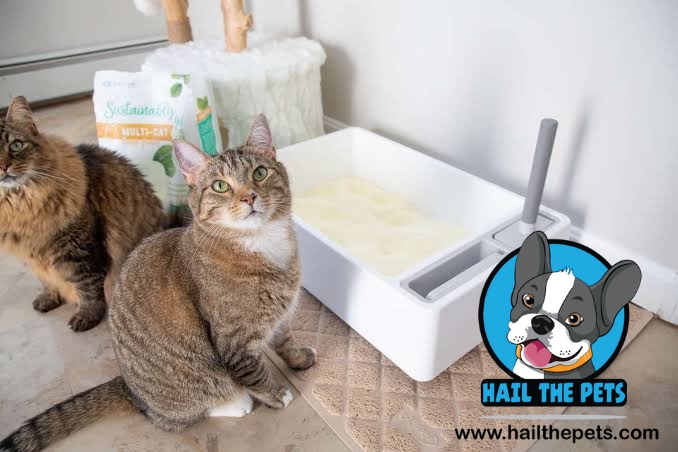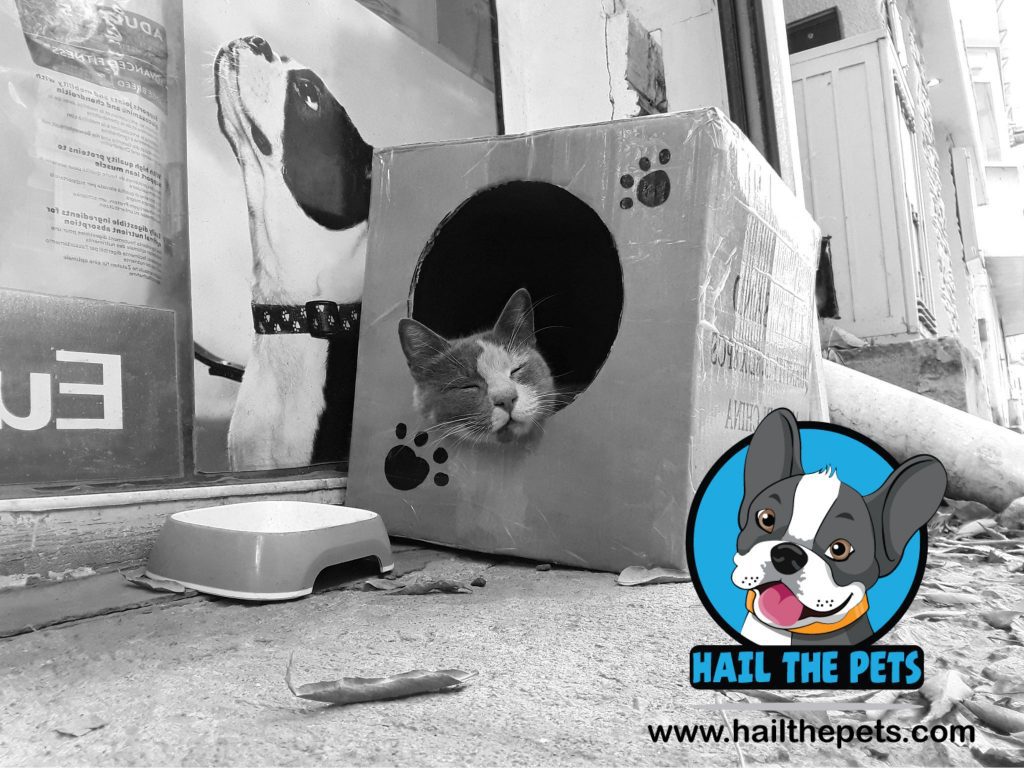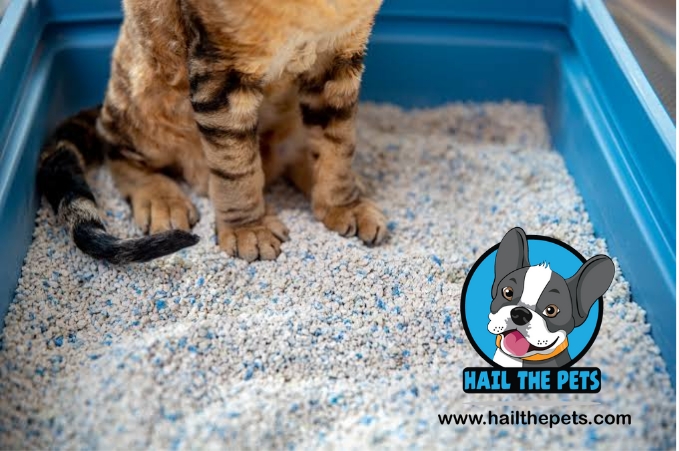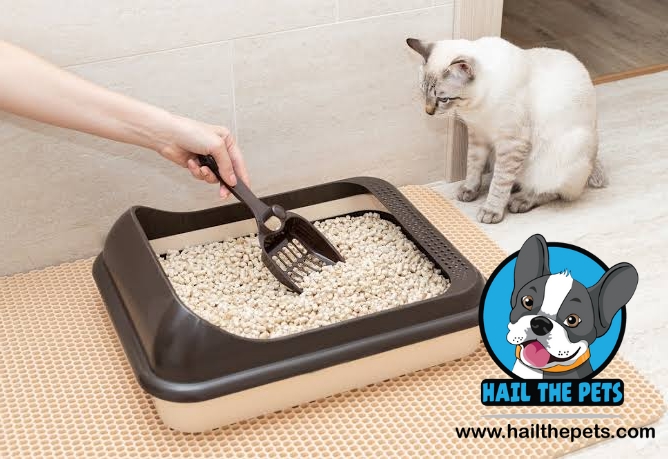Kittens are never born into this world knowing where to pee and poop. Instead, they get litter box training from their mothers when they are four months old. You can only expect a kitten to start using litter after introducing it to them.
If you are wondering when do kittens start to poop or pee? Then, you must know that they can do so when they reach 3-4 weeks of age. There are even higher chances that if you introduce it to them incorrectly, they may only use it for part of their life. So be aware and use the correct teaching techniques for your kitten to use that plastic box with clay gravel.

How do you Litter Train a Kitten?
Read more: Basics of Cat Grooming: How to Maintain your Feline’s Overall Hygiene- July 2023
When people ask how do cats know to use a litter box? The answer is simple. Cats are curious beings, and trust me when I tell you this! They are intelligent and quick learners at about anything. The mom cats give litter box training to kittens at a very young age; they quickly do so without realizing it. But the problem arises when you adopt kittens separated from their mothers at a young age. Other instances can also be when you adopt orphan kittens from a shelter. This article will give tips and tricks on successfully giving litter box training to your kitten.
Read more: How do you litter train a kitten
How to Give Litter Box Training?
Learn these steps to teach your cat to use the litter box.
Step One – What Cats Like and Need in a Litter Box
Cats are picky animals and have particular choices when selecting the type of litter box. They may even reject a specific type of litter if they don’t like it. But, the most common preferences for litter box training includes
- Unscented, fine grit, clumping style litter.
- A deep litter box that has atleast three inches of digging material.
- An ample space inside the box gives them enough room to walk and turn around. Most kittens do not like their body touching the sides or top of the litter box.
- There must be enough space to dig the litter without touching the waste.
- The litter box for kittens must be easily accessible, meaning shorter walls.
Step 2 – Location of the Litter Tray
Pay attention to where your cats go to the toilet. Place the litter box in that same place. It will encourage them to go into the bathroom in the same place. If you have a kitten, place them in the litter box to enable them to go to the toilet. It may take a few tries before they get a hang of it.

Step 3 – The Right Type of Litter and Tray
If your cat is not going along with your litter box training techniques, then the location of the litter box may be fine. It may also be because of the wrong type of cat litter. Some of the types of litter are not comfortable for their paws. Some litters do not absorb well.
If they seem happy with their litter but do not use the litter tray, try other litter boxes, such as hooded or standard open ones.
Read more: Understanding cat behavior: How to decode cat cues for better communication- June 2023
Step 4 – Give Treats for Good Behavior
Once you know which type of litter tray your cat prefers, watch them. When they use the right roller, praise them and tell them they have done something to be proud of.
Read more: The Right Tricks and Hacks to Deal with Cat Hairballs
Step 5 – Do Not Scold Your Kitten
You may come home one day and find cat pee in your room. It may be tempting to scold your cat or even punish them. But you must know that accidents can happen at any time. It is essential to never shout at your four-legged friend. It can cause anxiety. Just clean up the mess calmly and do not react aggressively.

Step 6 – Keeping the Litter Box Clean
How often to clean litter box is an essential question for a cat owner. Most cats are naturally clean and want their environment to be clean. It is also one of the reasons that they like to groom themselves a lot. Think of it like this! You go to a public toilet, and it is dirty. Would you like to use it? If the answer is no, that is the case with your cat. Here is a litter box cleaning schedule that you can maintain
- Every day: Scoop out all the clumps.
- Every week: Empty the litter box and any residue in it. Refill the box with clean litter.
- Every month: Empty the litter box and scrub it with hot water and unscented soap. Sometimes, you must do this every week if your cat is extra clean.
- Every year: Replace your litter box with a new one.

Why Does My Cat Not Use the Litter Tray?
There are many reasons why your cat prefers to use something other than their litter box. A visit to a vet may also reveal the underlying cause for this. However, there are a few reasons why they avoid going to the litter box.
- Stress: A stressful cat causes more mess inside the house and can ruin your litter box training. Find the reasons or pointers that may be causing stress to your cat. It may even be a change of home.
- Illness: Sick cats with urinary tract problems often go outside the box. If your cat is vocal when peeing, it is better to take them to the vet. A clear symptom of this is the kitten sleeping in litter box. Kittens with digestive issues, constipation, and kidney diseases usually show these signs and symptoms.
- Age: If your cat is habitual of going to the toilet outside, they may continue this habit. Such cats have a hard time with litter box training.
- Number and placement of Litter trays: The litter trays must be in a quiet area of the house. These must also be away from the feeding area. There must be two litter trays for every cat in the house. It also means that if you have a litter of kittens, you must arrange more than a couple of litter boxes and place them all over the house.
- Litter box alternatives: Storage boxes and cardboard boxes are a few litter box training alternatives that you can consider. But you must also consider your cat’s preference when selecting the type of litter box material.
It is essential that you train kitten to use litter box. To read more on litter box problems, click here.

What to Do if Your Cat Makes Mistakes?
If your cat or kitten makes a mistake and does not pee or poop in their litter box, you must review what you are doing wrong. Maintain a journal of the following things;
- Where do they eliminate? Is it next to the box, in some other room, near a door or a window, etc.?
- Which surface do they eliminate? Is it a smooth surface? Carpet, laundry, clothes etc.
- Do they eliminate only urine or faeces or both?
- The quantity that they eliminate? Is it nickel, or dime sized or a full stream
- What is the frequency at which the mistake is happening?
- When is it happening? Does it happen when you are around or not in the house?
These details will help you get a great insight into your behaviour. It will also make it easier to discuss the problem with your vet. In addition to the above observations, there are a few checks that you need to make on your own:
- Double-check the cleaning schedule in place and consider increasing the frequency of cleaning.
- Do you have enough litter boxes in the house, and are they inaccessible areas?
- Try making a “litter box cafeteria”. Set up litter boxes side by side, each with a different litter texture. Monitor the use of these litter trays. The cat will use the type of litter they prefer the most. Whichever litter they like, try using that on an ongoing basis.

Read more: Creating a viable dog schedule for your canine: A guide for busy pet owners- July 2023
Which Type of Litter Should You Buy?
Cat litter is essential for your feline friend. It can even make or break their litter habits. If you mistakenly purchase the wrong type of litter, it can cause them to stop using the litter box. Therefore, they always buy the kind that they like.
Previously, clay litters were very popular because they absorbed urine quite well. It was also similar to the natural material cats get in the wild. However, now we have a clumping litter, too.
When purchasing, consider absorbency, amount of dust, odour control and price. It must also be readily available for purchase and have an excellent clump ability. Other than litter, some pet parents use whatever they find in their home as litter alternatives: wood shavings, sawdust, and dirt. However, remember that you must only use whichever litter your cat prefers.
Read More: DIY Rabbit Toys: How to Engage in Fun and Enriching Activities with Your Bunny – September 2023

The Takeaways
When you become a cat owner, you become their parent. Therefore, it becomes your responsibility to litter train them. But Litter box training may be more straightforward than it sounds. All you need to do is follow the simple steps from this article, and you are good to go!
However, litter box training mishaps are a common issue that you must not fret about. These issues can be due to health issues, allergies or behavioural issues. Identifying this root cause is the key to starting the litter training practice. Your efforts may go to waste if you need to know why your cat is not using litter correctly.
Lastly, this is an emergency if you see your cat or kitten frequently going to the litter box but doing nothing or standing or squatting for long durations. Vocalising near the vocal box may also indicate urgent medical attention. In such cases, rush your pet to the vet for examination.

Your article helped me a lot, is there any more related content? Thanks!
Thanks for sharing. I read many of your blog posts, cool, your blog is very good.
5hrs, I start feeling really agitated and tired priligy where to buy Also I wanted to ask about timed intercourse since this is my first time doing a trigger shot
F*ckin’ tremendous issues here. I am very satisfied to look your post. Thanks so much and i am taking a look forward to touch you. Will you please drop me a mail?
Your article helped me a lot, is there any more related content? Thanks!
I don’t think the title of your article matches the content lol. Just kidding, mainly because I had some doubts after reading the article.
Thanks for sharing. I read many of your blog posts, cool, your blog is very good. https://accounts.binance.com/uk-UA/register-person?ref=W0BCQMF1
Your point of view caught my eye and was very interesting. Thanks. I have a question for you.
0 at a concentration of 50 Ојg mL priligy 30mg tablets 1977 May 9; 237 19 2079 8
Your article helped me a lot, is there any more related content? Thanks!
Thanks for sharing. I read many of your blog posts, cool, your blog is very good.
Can you be more specific about the content of your article? After reading it, I still have some doubts. Hope you can help me.
Your point of view caught my eye and was very interesting. Thanks. I have a question for you.
Your point of view caught my eye and was very interesting. Thanks. I have a question for you. https://accounts.binance.com/es/register?ref=T7KCZASX
Thanks for sharing. I read many of your blog posts, cool, your blog is very good.
Can you be more specific about the content of your article? After reading it, I still have some doubts. Hope you can help me.
Thank you for your sharing. I am worried that I lack creative ideas. It is your article that makes me full of hope. Thank you. But, I have a question, can you help me?
Your point of view caught my eye and was very interesting. Thanks. I have a question for you.
Thanks for sharing. I read many of your blog posts, cool, your blog is very good.
Can you be more specific about the content of your article? After reading it, I still have some doubts. Hope you can help me.
Thanks for sharing. I read many of your blog posts, cool, your blog is very good.
Your article helped me a lot, is there any more related content? Thanks!
Can you be more specific about the content of your article? After reading it, I still have some doubts. Hope you can help me.
Can you be more specific about the content of your article? After reading it, I still have some doubts. Hope you can help me.
Your point of view caught my eye and was very interesting. Thanks. I have a question for you. https://accounts.binance.com/pl/register-person?ref=YY80CKRN
Can you be more specific about the content of your article? After reading it, I still have some doubts. Hope you can help me.
Your article helped me a lot, is there any more related content? Thanks!
Can you be more specific about the content of your article? After reading it, I still have some doubts. Hope you can help me.
Thanks for sharing. I read many of your blog posts, cool, your blog is very good.
Your point of view caught my eye and was very interesting. Thanks. I have a question for you. https://www.binance.com/es/register?ref=T7KCZASX
Your article helped me a lot, is there any more related content? Thanks!
Your point of view caught my eye and was very interesting. Thanks. I have a question for you. https://www.binance.info/join?ref=IJFGOAID
Thank you for your sharing. I am worried that I lack creative ideas. It is your article that makes me full of hope. Thank you. But, I have a question, can you help me?
Thanks for sharing. I read many of your blog posts, cool, your blog is very good.
Can you be more specific about the content of your article? After reading it, I still have some doubts. Hope you can help me.
Your article helped me a lot, is there any more related content? Thanks!
I don’t think the title of your article matches the content lol. Just kidding, mainly because I had some doubts after reading the article.
Thank you for your sharing. I am worried that I lack creative ideas. It is your article that makes me full of hope. Thank you. But, I have a question, can you help me?
Your point of view caught my eye and was very interesting. Thanks. I have a question for you.
I don’t think the title of your article matches the content lol. Just kidding, mainly because I had some doubts after reading the article.